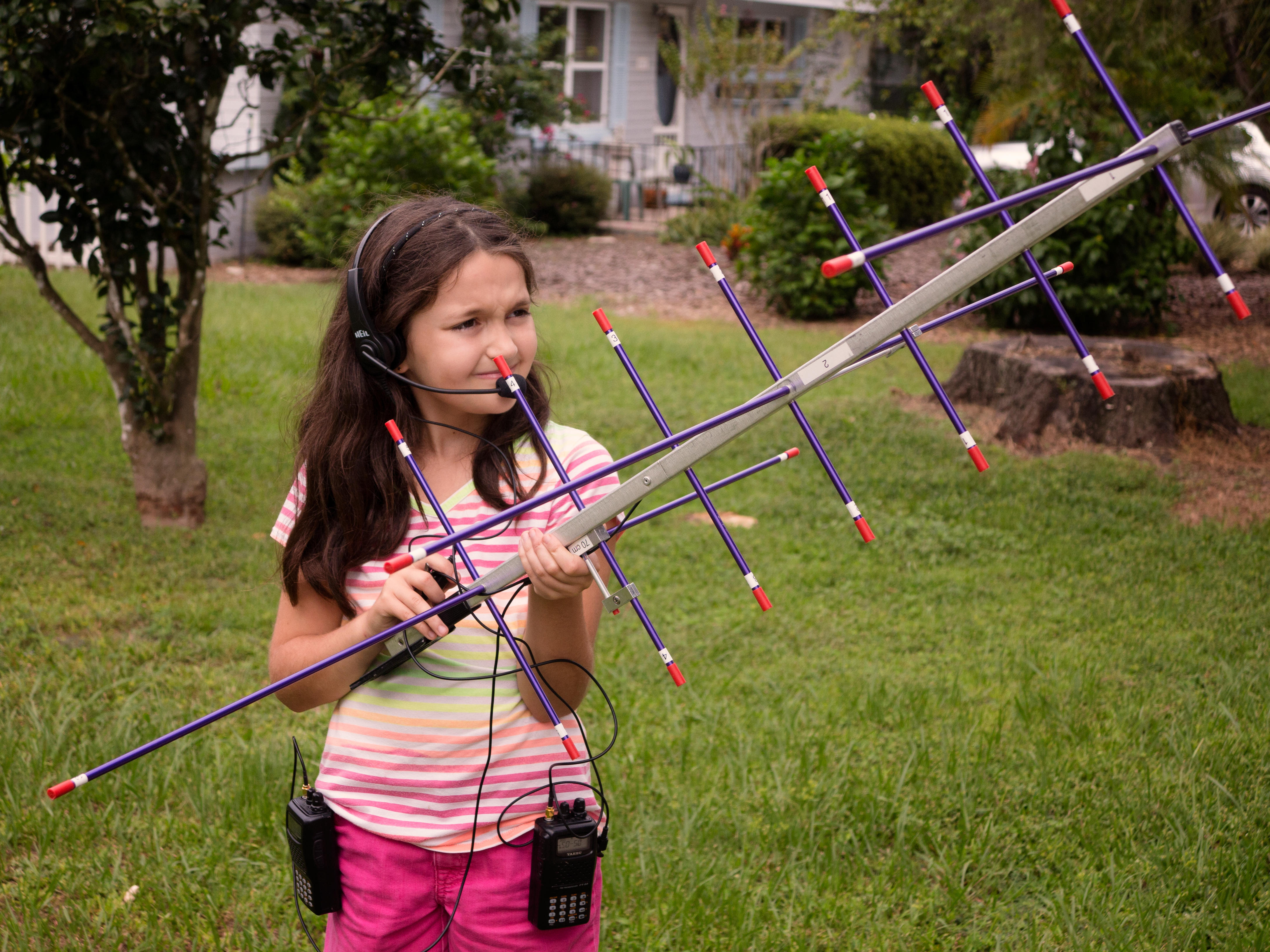
Keen amateur satellite operator Hope KM4IPF
Here a few few quick pointers which might help you. We are sometimes asked if a licence is required to RECEIVE satellites in the Amateur Satellite service. The answer is ‘no’. You only need a licence if you intend to TRANSMIT, e.g. use one of the transponders to make two-way communication with other radio amateurs.
Information on amateur radio and getting a licence can be found at https://amsat-uk.org/beginners/what-is-amateur-radio/
Visit as many amateur radio satellites web sites on the internet as you can. In particular visit the AMSAT-North America (AMSAT-NA) site at www.amsat.org. This site contains a wealth of information and articles.
Find a way of determining where the satellite you are attempting to listen to is at any given moment. Try looking at http://www.amsat.org/amsat-new/tools/predict/ (part of the AMSAT North America website) or other web sites on our links page which allow the determination of a satellites position. Alternatively, obtain some satellite tracking software you can run on your PC. (See our shop pages)
The article “Getting started on amateur radio satellites” by John Heath, G7HIA, contains much useful information.
The recommended book to read is “The Radio Amateur’s Satellite Handbook” by Martin Davidoff, K2UBC. This book is available from the Radio Society of Great Britain and costs approximately £10.00. There is more material on the AMSAT North America web site at http://www.amsat.org/amsat-new/information/faqs/
Select a satellite for which you have a suitable receiver. Some can be received using simple omni-directional antenna, but better results with a larger number of satellites can usually be obtained with modest directional antennas of the type very often found in existing amateur radio set ups.
To start with concentrate on being able to receive the satellite’s beacon transmission. Once you are confident at doing this, move onto receiving signals from other amateur stations which are being retransmitted by the satellite. Very often, the FM satellites are the easiest to receive. Amateur radio satellites in Low Earth Orbit are generally only in-range for 10-15 minutes at a time.
You do not need generally need antennas which are adjustable in elevation (although for very best results, they are desirable). Generally, Low Earth Orbit satellites (the ones in an orbit similar to the International Space Station) spend most of there time at elevations less than 60 degrees at any point on the earth; hence, say, a 6 element U/VHF beam, fixed at an elevation of 30 degrees will prove very satisfactory.
If you are trying to receive a particular satellite, you may like to visit http://oscar.dcarr.org/ to see if anyone else has succeeded!
For a wealth of practical information on using satellites, go to Howard Long’s site at www.g6lvb.com
And of course, join AMSAT-UK to get the latest news, and support the amateur radio space programme.
Further reading:
• How to hear the ISS
• How to work FM satellites
• How to work SSB satellites
• Guide to receiving Weather Satellites
• How to track satellites

